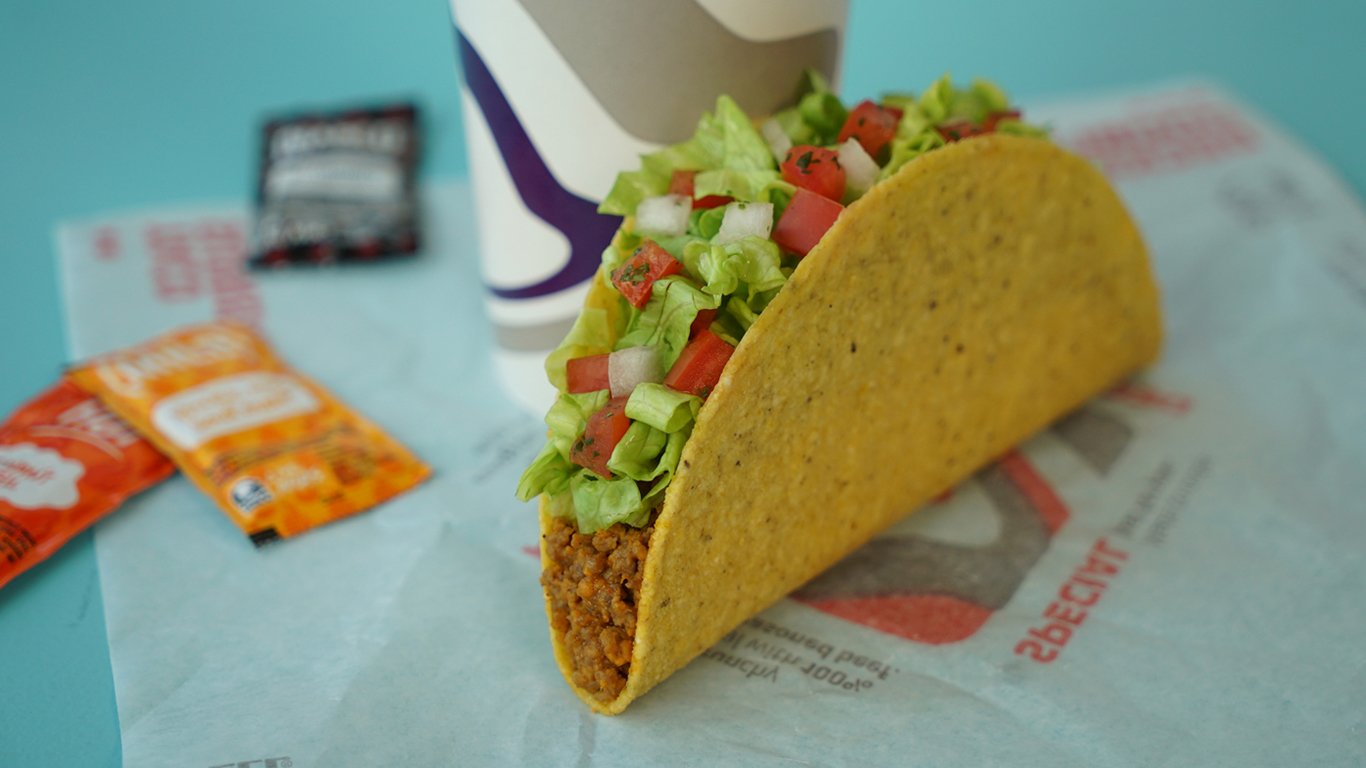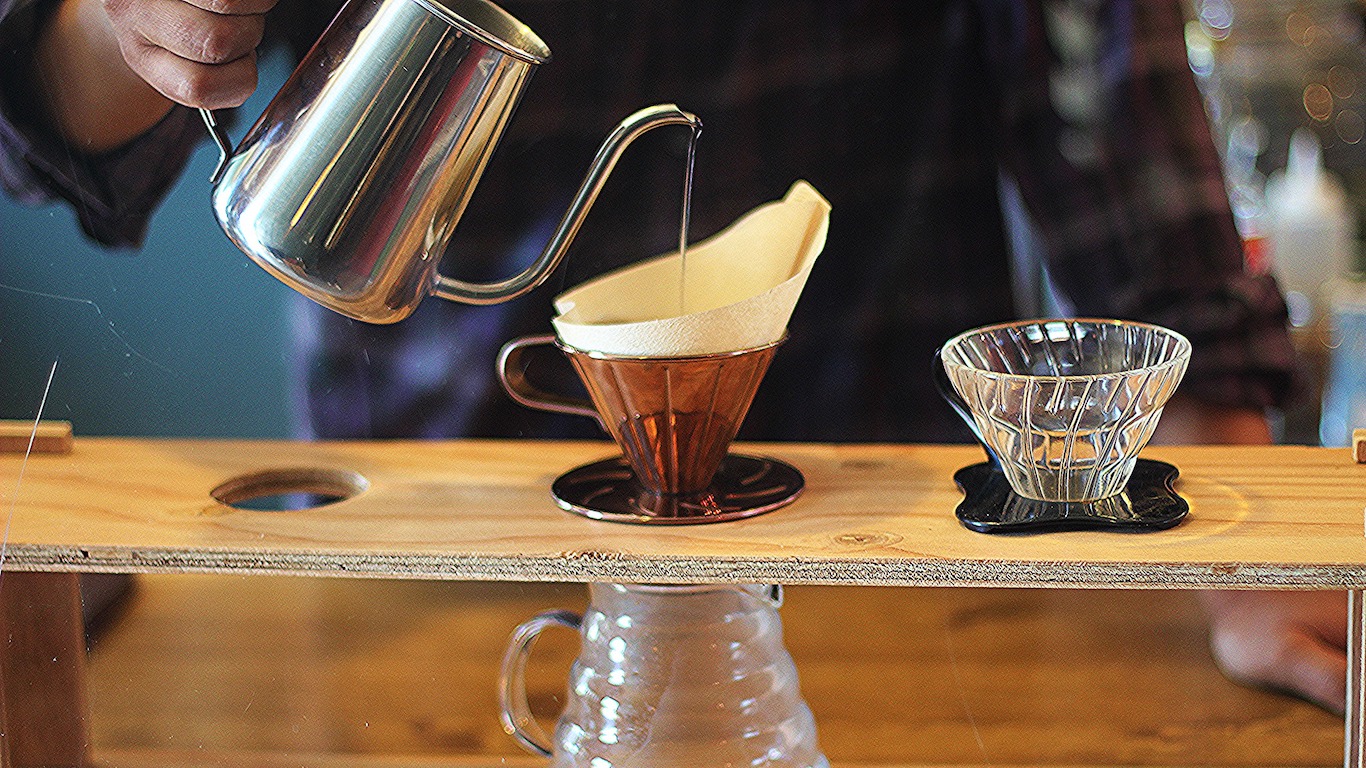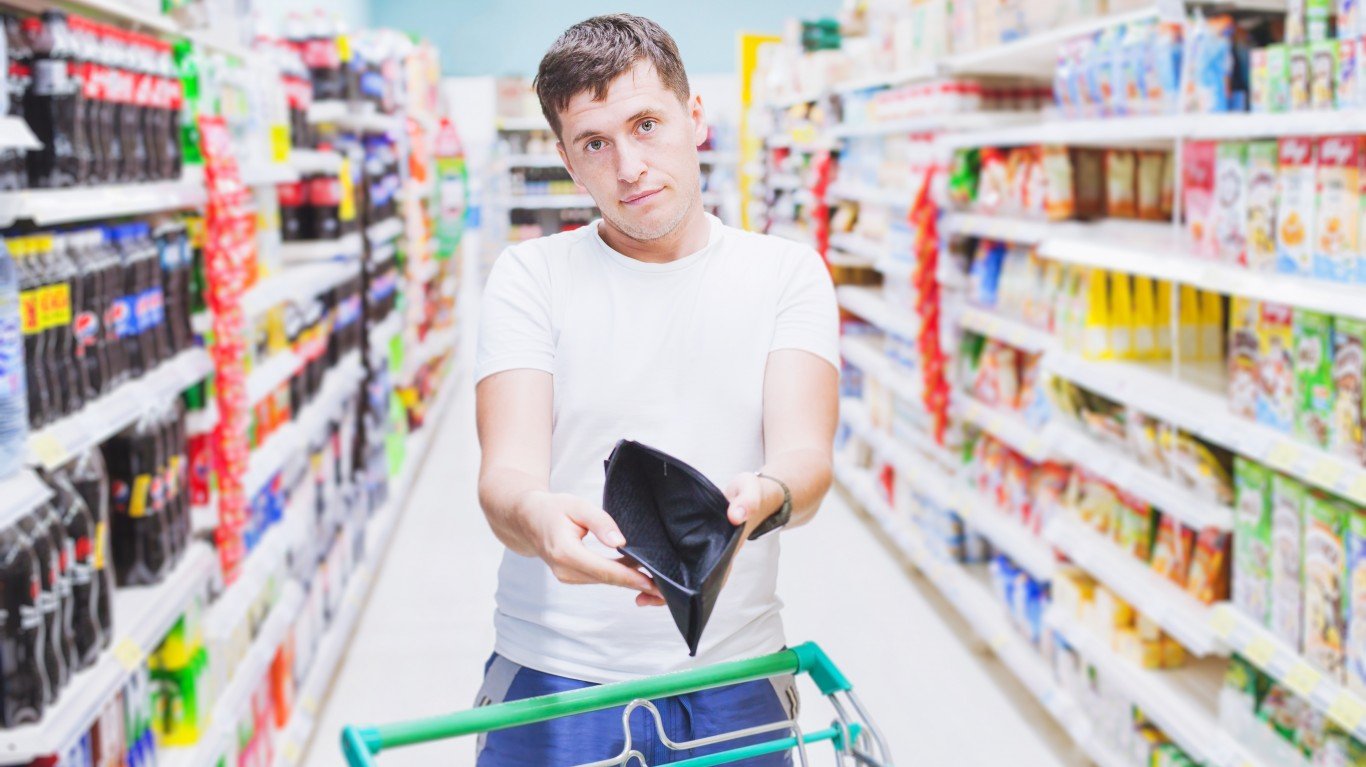

Food is the third-largest living expense (after housing and transportation) for the average American family. That’s probably inevitable. We have to eat to live, and for a whole host of reasons, the things that we like to eat — and especially those that are both satisfying and nutritious — tend to cost a fair amount of money. You might be surprised at how much, according to the USDA’s monthly report on the cost of food at home.
We often end up paying more for food than we should, though, for reasons that are largely our own fault. We shop badly. We don’t take advantage of ways to save money. We waste food, buying things that we never end up using, that end up spoiling before they reach our tables. These are the foods with the longest shelf life.
Unlike many corners of the world, we are a nation of plenty — at least for the more fortunate among us. There are nearly 40,000 grocery stores around the country, more than 26,000 of them supermarkets stocking a full line of groceries, meat, and produce. Newcomers to America are frequently amazed by the variety and sheer abundance offered by such places.
And markets deploy numerous strategies to get all of us, longtime locals and newcomers alike, to buy more and more of the foods that fill their shelves and bins and cases — both raw materials and ready-made packaged goods or finished meals. That’s true even of the most popular grocery stores in every state.
There’s nothing wrong with taking advantage of all the great things to eat that are available to us, if we can afford them, of course, but it’s all too easy for food costs to get out of hand.
Click here to see signs that you’re probably spending way too much money on food.
24/7 Tempo has assembled a list of things you might do — or not do — that can run up your food bill. You would likely be surprised at how much these behaviors might cost you every year. Luckily, most of them are easy to correct.
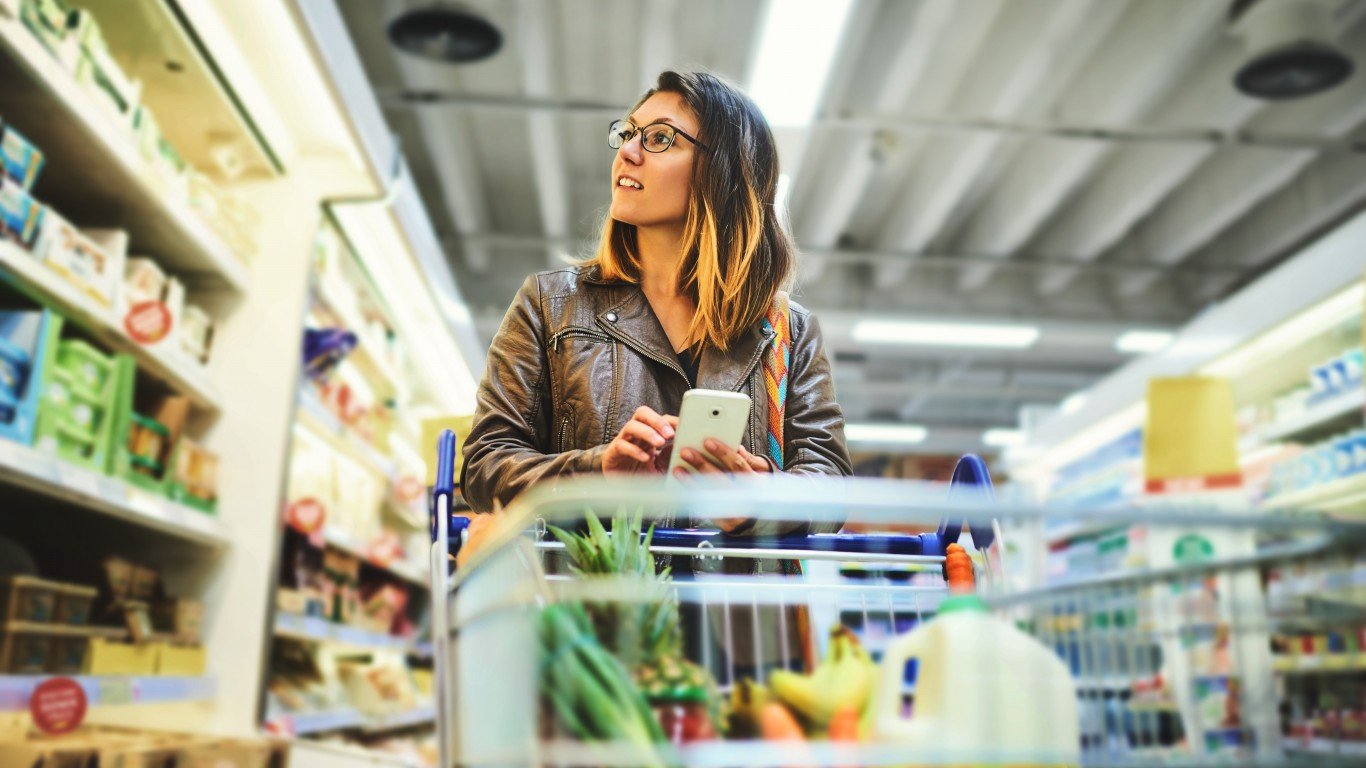
1. You shop without a grocery list
The grocery list is a wonderful invention, whether it’s on a scrap of paper or on your tablet or smartphone. It’s a good way to stop yourself from buying food you don’t need or probably won’t use. As a bonus, it can also save you time because you can group food types — produce, dairy, meat and poultry, etc. — together so you don’t have to wander up and down the same aisles again and again.
[in-text-ad]
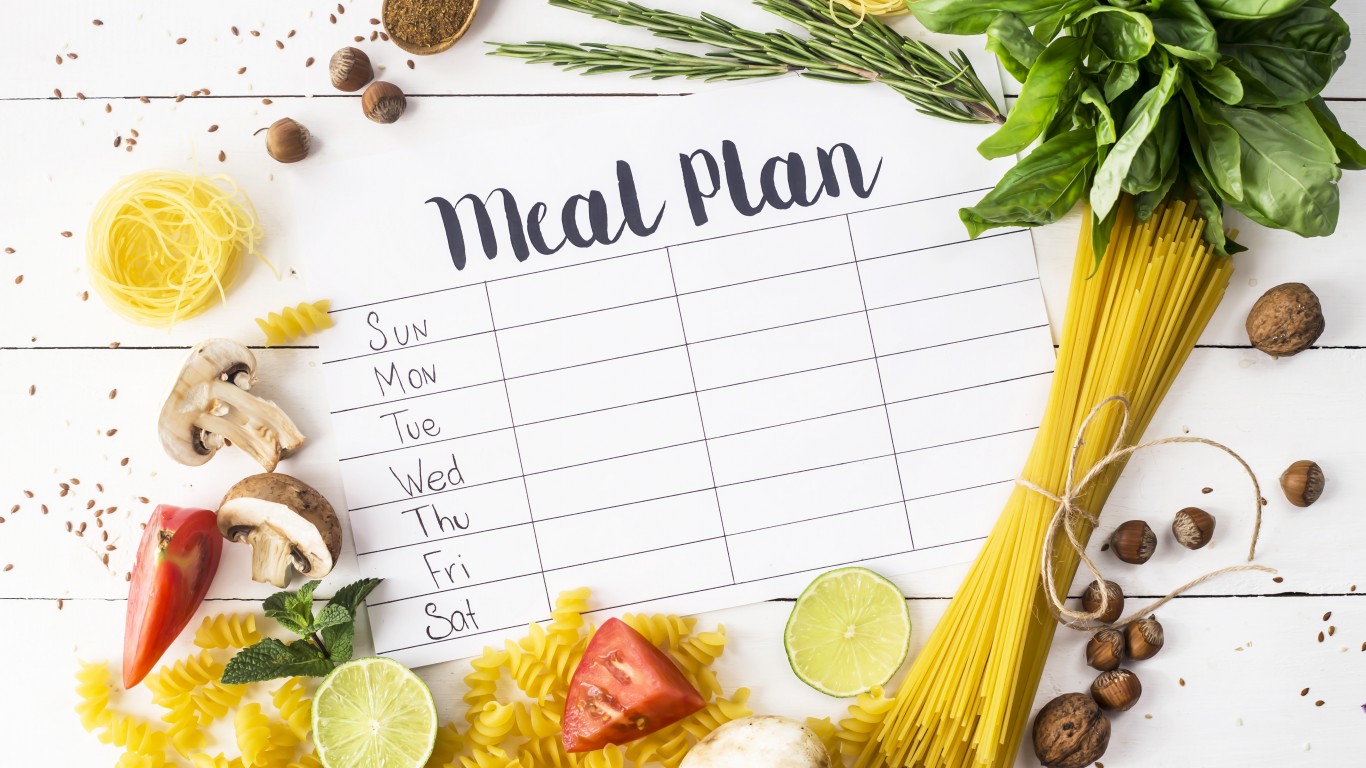
2. You don’t plan your meals before you shop
Whether or not you write up a grocery list, you should always have at least a rough idea of what you’re going to be cooking or eating in the coming days. Your plans don’t have to be specific; a rough idea will do. But mapping out the meals you think you’ll want to make in the immediate future, however vaguely, will keep you from buying things you’re not going to use, or from ending up with too much of something that actually is on the menu.
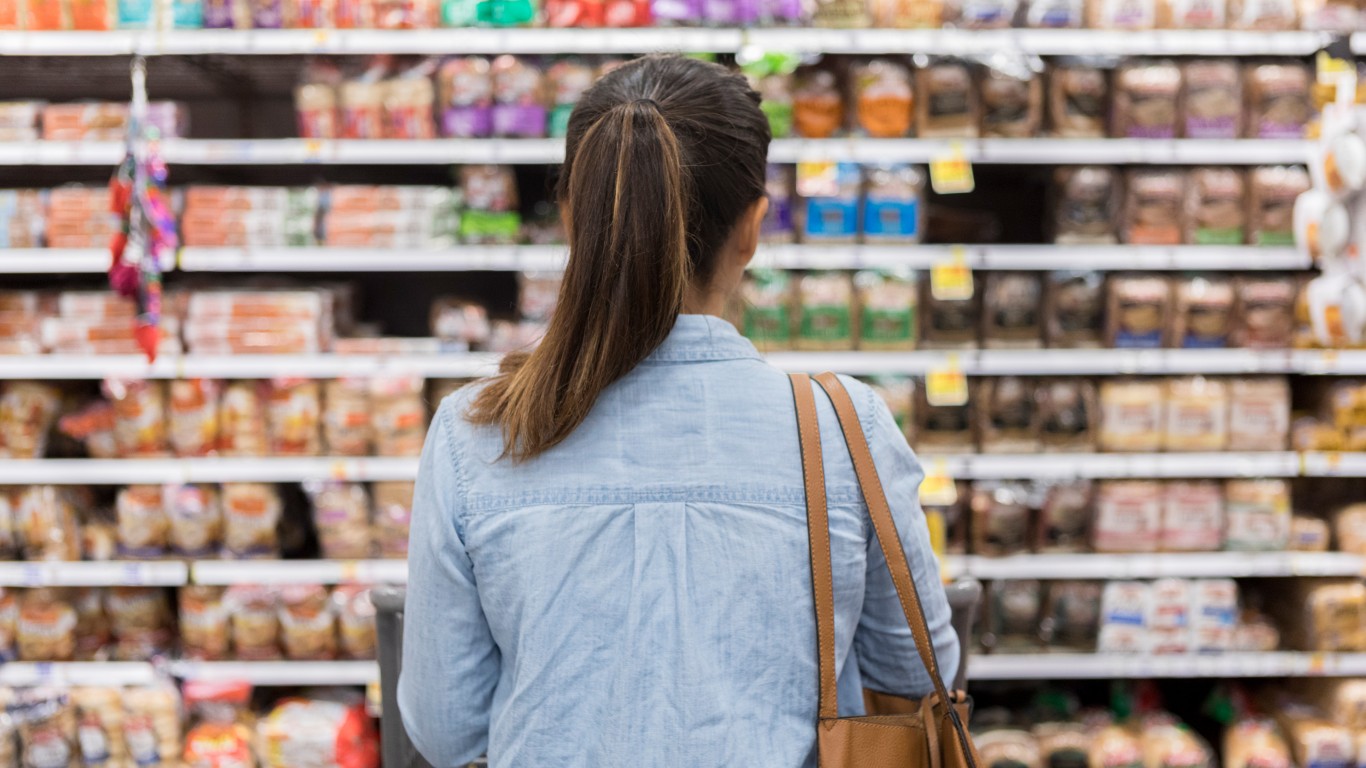
3. You shop hungry
Big mistake. When you’re hungry, everything looks good, even if it’s not on your list or in your plans. Supermarkets depend on their customers making impulse buys and use many tricks to accomplish this goal (see No. 4, for example). If you walk into the treasure house of food products that is the modern supermarket with a raging appetite, you’re just making it easier for them to tempt you into putting things you don’t really need or want into your cart.
4. You buy items at the ends of grocery aisles
That’s just what the markets want you to do. End-of-aisle displays, called “end caps,” are shopper magnets. The whole idea is that if they make certain products stand out, the shopper will think they’re something special and be unable to resist. The strategy works: According to one survey, products in those positions sell eight times faster than the same item on a regular shelf.
[in-text-ad-2]
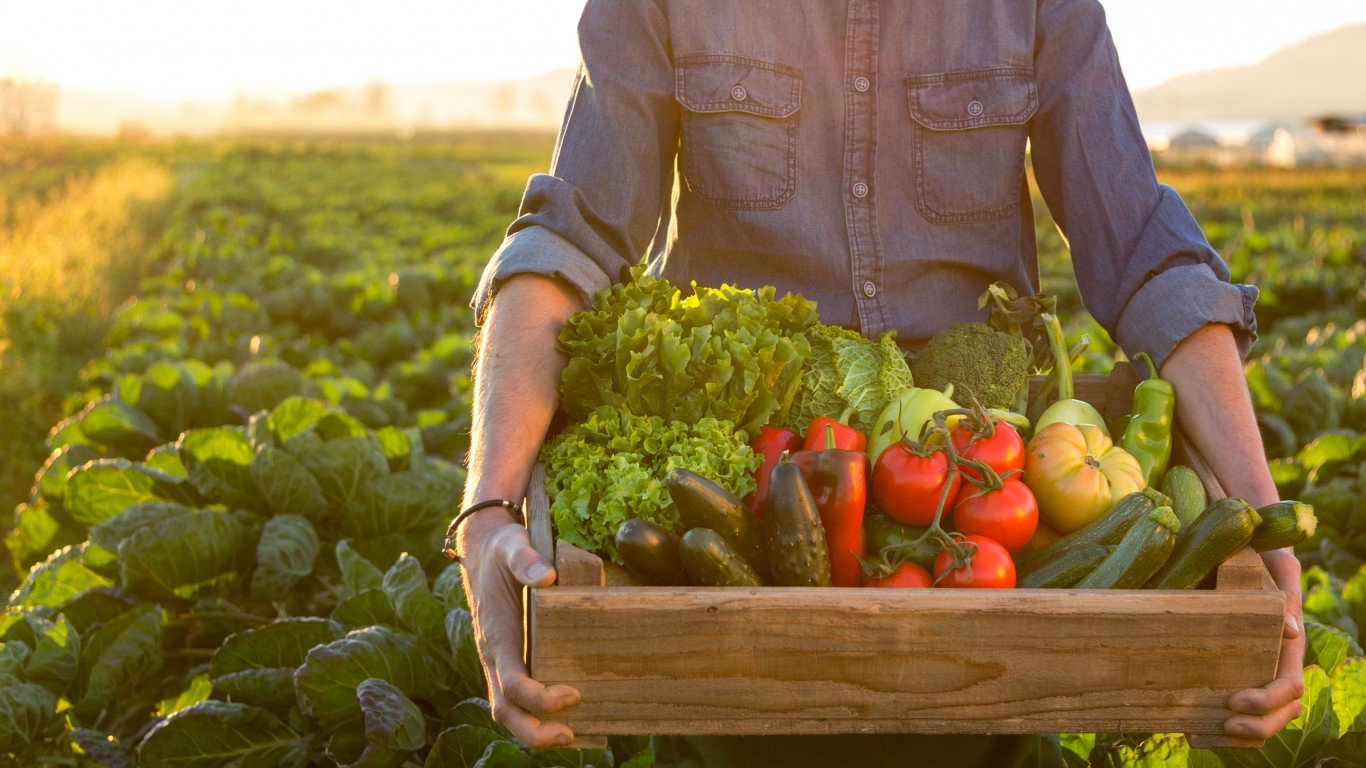
5. You buy only organic produce
People buy organic produce to avoid the pesticide residue that coats many fruits and vegetables. According to the Environmental Working Group, strawberries, spinach, and kale are among the worst offenders, so it’s worth spending the extra bucks to get those in their organic form. On the other hand, the EWG also publishes a list of the “Clean Fifteen” — produce on which little if any pesticide residue is detected. Avocados, corn, pineapples, and more are on the list and there’s simply no reason to buy organic versions of these items if they cost more than the non-organic ones, which they almost always do.
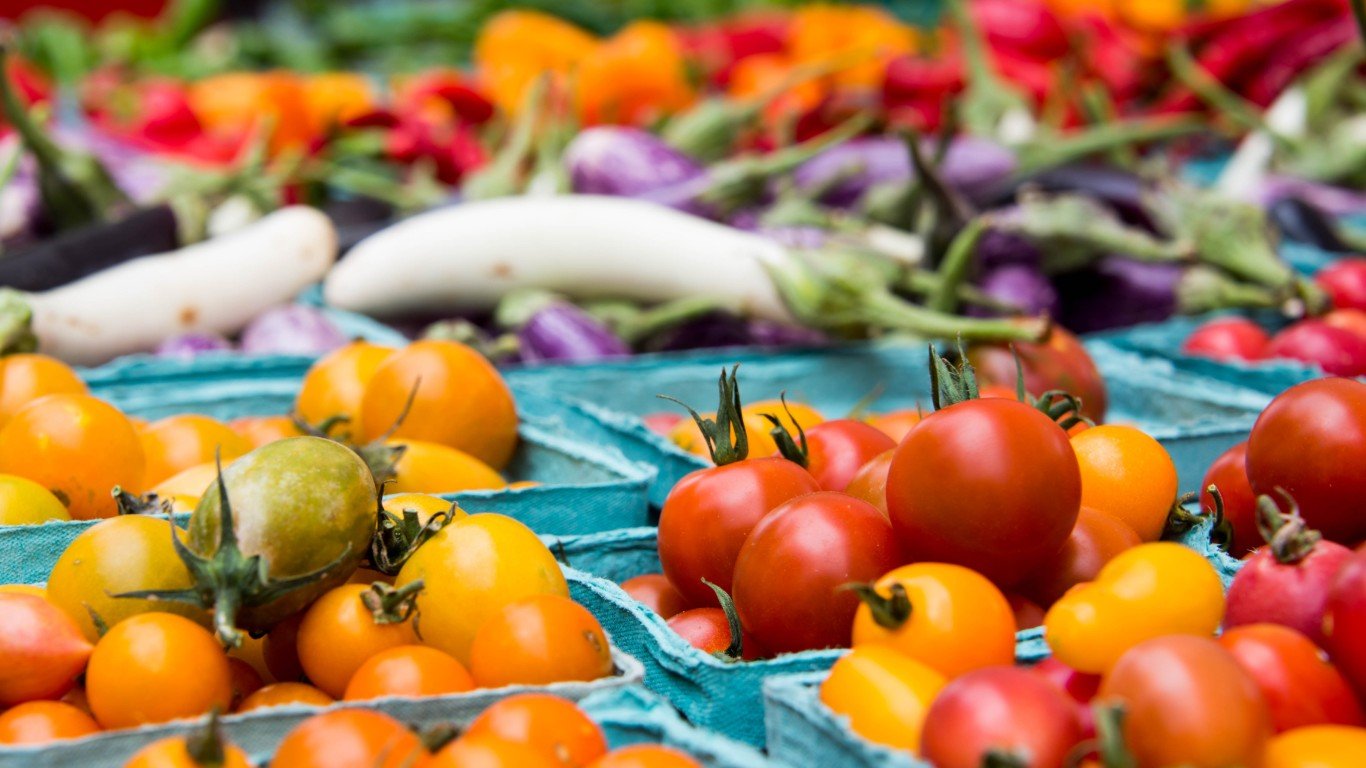
6. You buy out-of-season produce
Sure, it’s tempting to reach for those bright red tomatoes or those luminous yellow peaches when it’s snowing out. But not only are they unlikely to have the flavor of their summertime equivalents — they’re likely imported from far away, which means they both have a sizable carbon footprint and will almost certainly cost more than they would in season.
[in-text-ad]
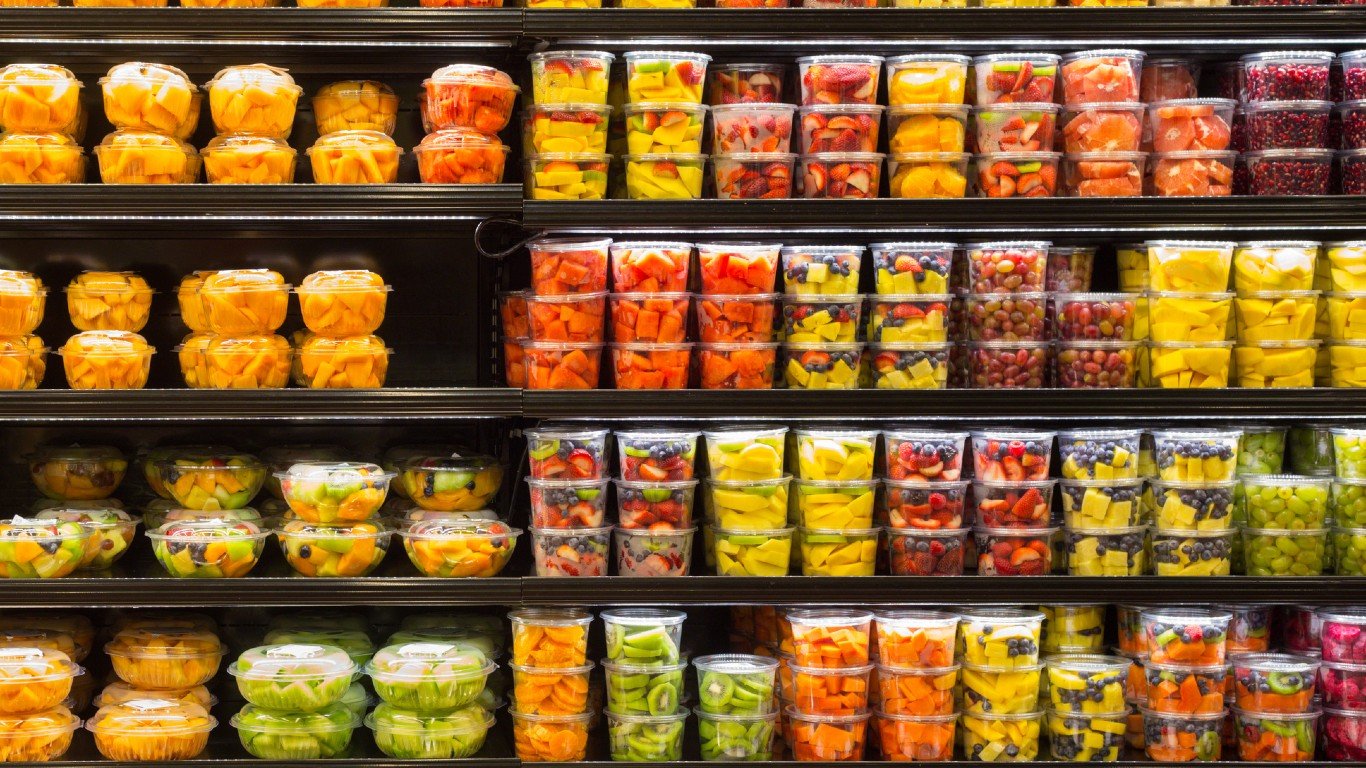
7. You buy pre-cut produce
Supermarket produce departments are now full of plastic tubs containing bite-sized pieces of melon or pineapple, broccoli separated into florets, halved Brussels sprouts, and such. Sure, they’re convenient. And sure, they’re expensive — probably more expensive than you realize. A couple of years ago, Vice did a study comparing whole and pre-cut produce from various New York area supermarkets. Among the disparities they found: red onions for 49 cents a pound whole but $4 a pound diced, and organic butternut squash for $1.29 a pound whole and $4.80 cut into chunks. Their conclusion was that peeling and chopping food yourself could save you $100 or more a month.
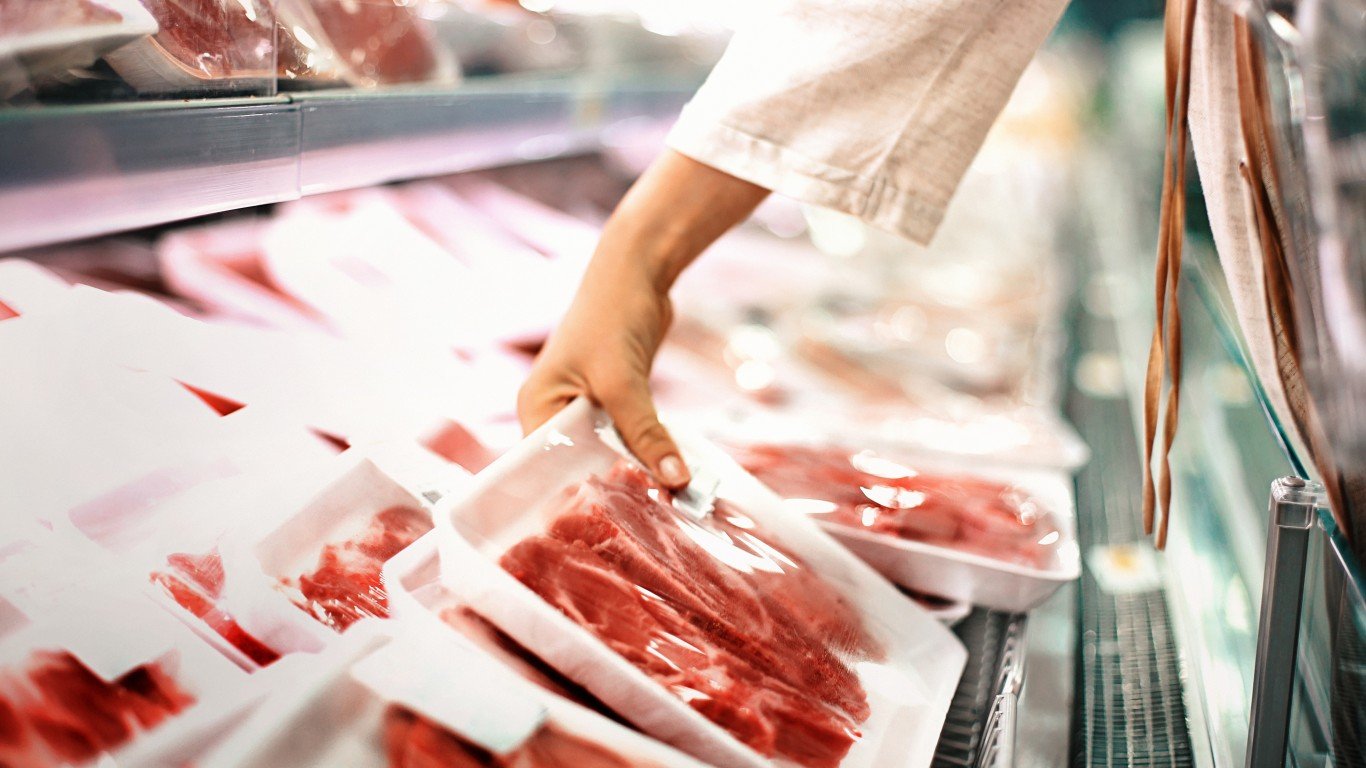
8. You buy only the priciest cuts of meat
We should all probably be eating less meat than we do (assuming that we eat it at all), for our health and that of the environment — but also because good meat costs a lot of money, especially if we buy only prime cuts like T-bone steak, rack of lamb, or pork loin chops. Meats like these can be delicious, of course, and are worth the splurge on occasion. But cheaper cuts — which may require longer cooking (like braising or stewing) or long marinading or even sometimes physical pounding to tenderize them — generally have more flavor.
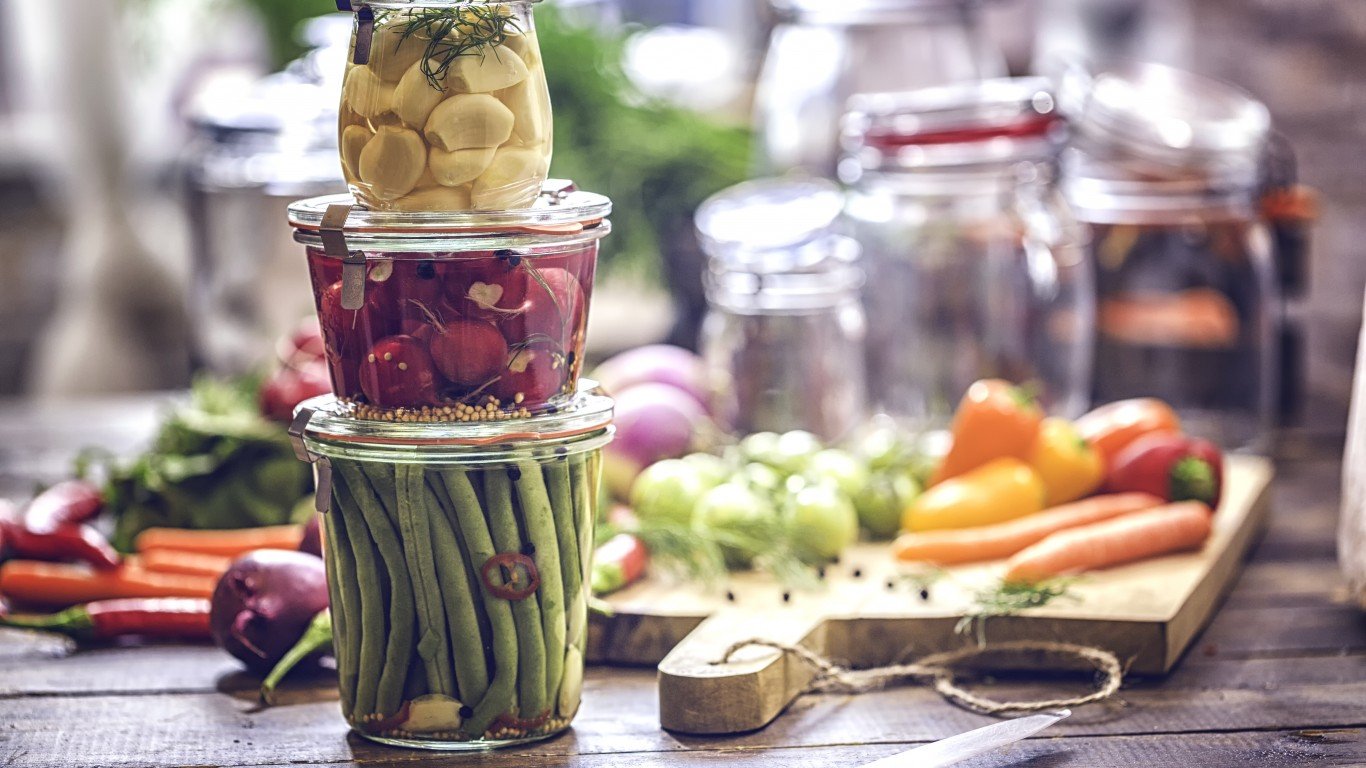
9. You buy pricey ingredients you’re only going to use once
It’s admirable to want to try cooking new dishes, possibly from unfamiliar cuisines — but are you likely to use that rare spice, unusual sauce, or uncommon pickled vegetable more than once? If not, maybe try leaving it out of what you cook, or considering another recipe. People’s pantries are full of aging exotic foodstuffs that haven’t been touched in years.
[in-text-ad-2]

10. You buy staples at specialty stores
Upscale boutique markets might be great when you want to buy top-quality meats or unusual cheeses or a little jar of caviar, but the everyday stuff — the onions, the dried pasta, the milk — will almost certainly be more expensive than at the regular supermarket. To cut food costs, make two stops.
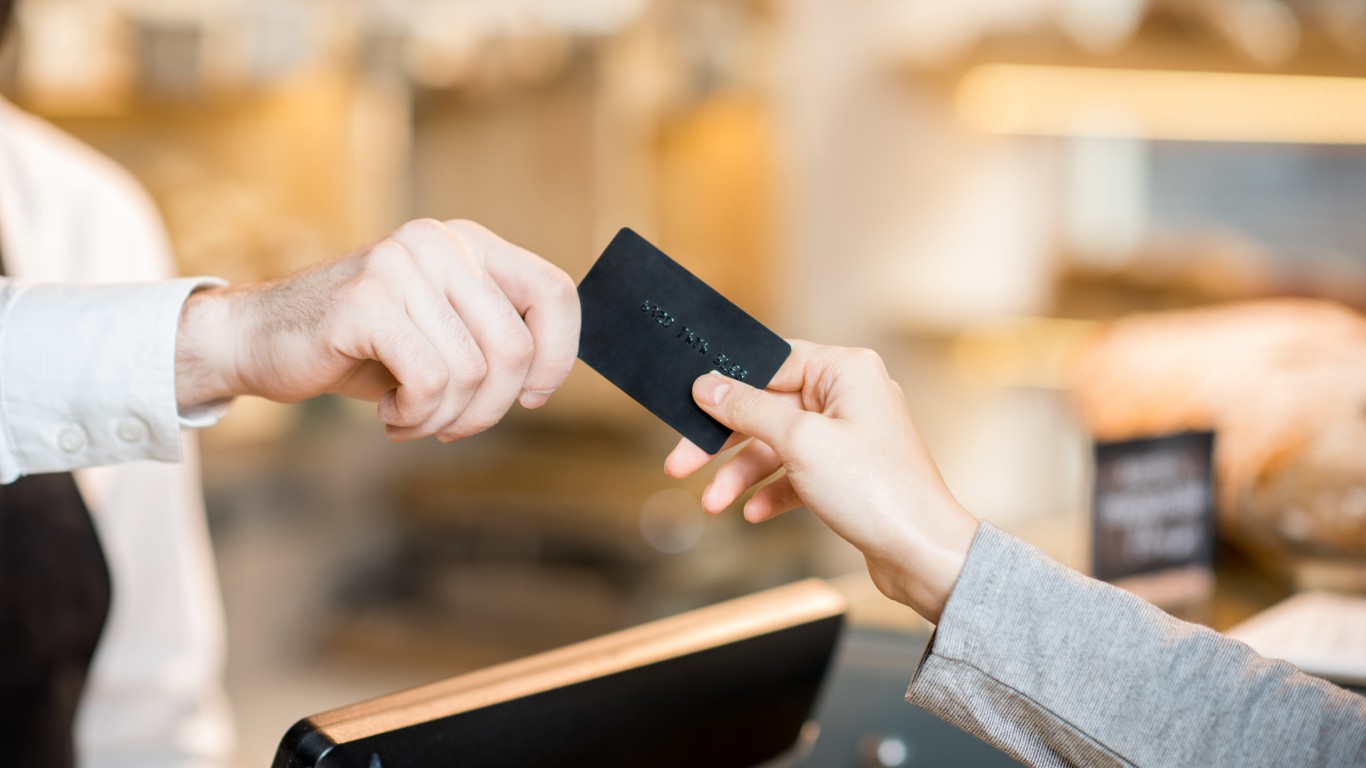
11. You buy groceries with a credit card
Numerous studies have shown that people nearly always spend more when they’re paying with a credit card than with cash. One estimate, from the marketing department at MIT, suggested that the difference could be as much as 100% — in other words, that the credit card shopper spends twice what the cash customer does, whether on groceries or anything else.
[in-text-ad]
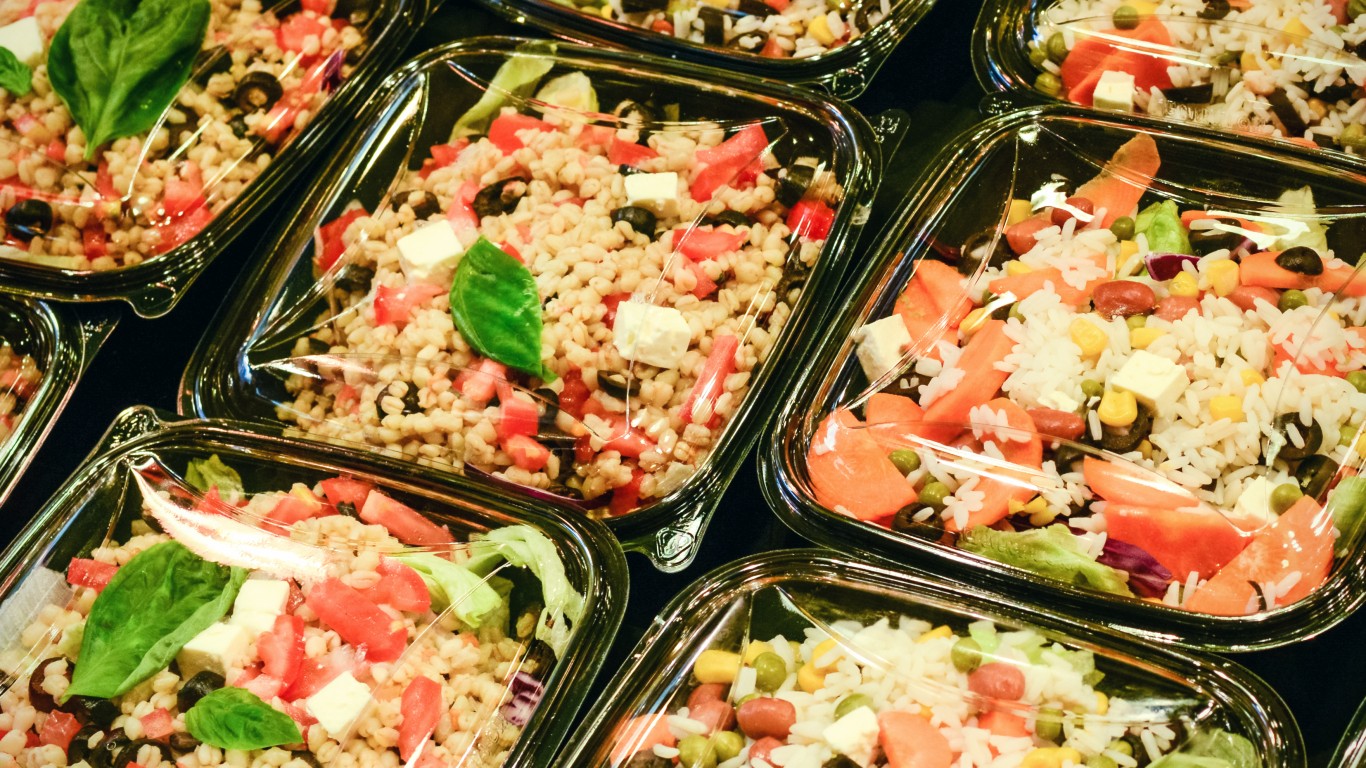
12. You buy ready-made meals at the market
In 2016, Consumer Reports found that more than half of the nearly 63,000 subscribers they surveyed buy prepared meals at the market. Supermarket prepared-food had become a $29 billion a year business in America, they wrote. Such meals are very convenient, of course, and often offer healthier options than the fast-food place down the street (though CR did find that they were frequently high in sodium). But you pay for the convenience. The publication reported that four sample meals from four different chains all cost more than twice as much as the same meal would have if it had been made at home.
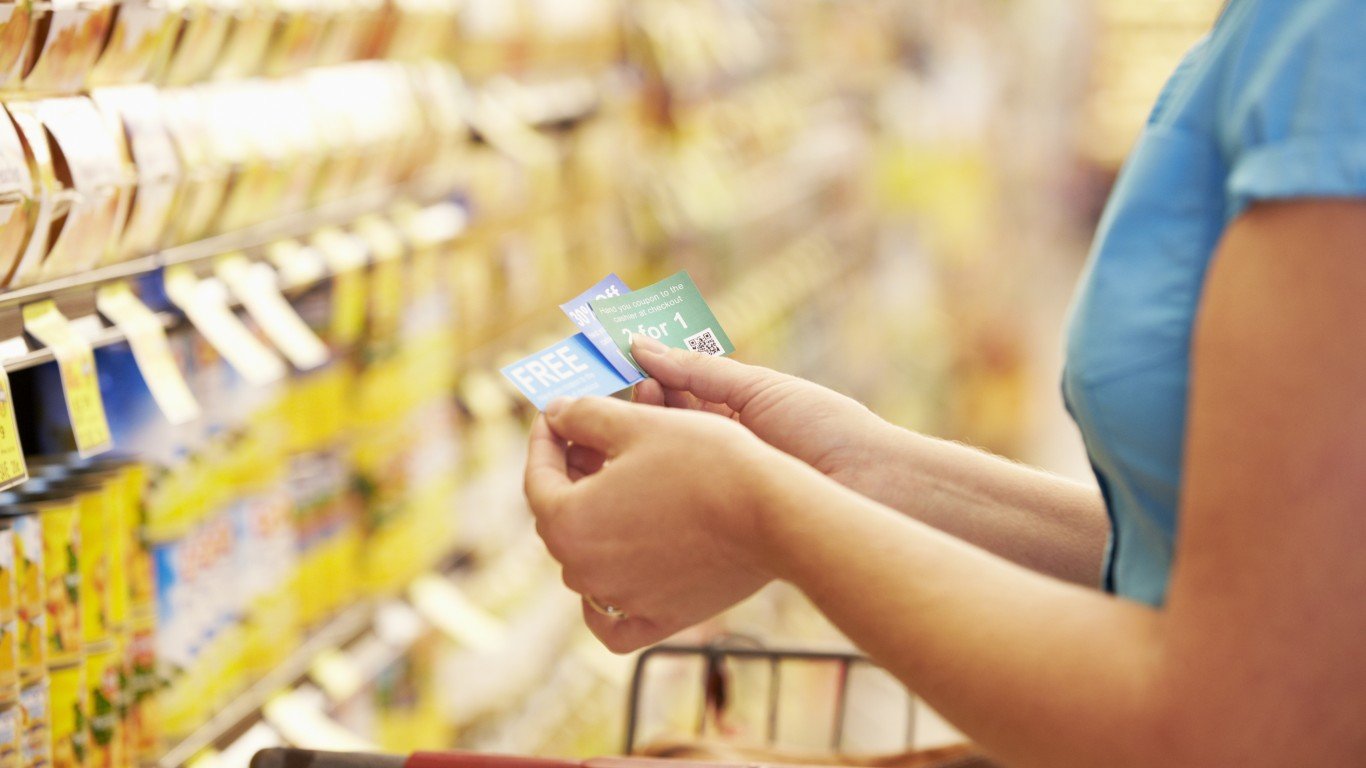
13. You don’t use coupons
Supermarket coupons, frequently sponsored by manufacturers to introduce new products or stimulate sales, are a great way to save money. Published in newspapers, online, and in flyers, they typically offer substantial discounts or two-for-one deals. One study computed that marketers distributed coupons for food, drink, tobacco, clothing, and household items worth $470 billion last year, but consumers redeemed only $4.6 billion worth. Some people don’t like to use coupons because they associate them with lower socio-economic groups — but statistics show that shoppers with a college education and household incomes of $100,000 and up are twice as likely to use coupons as those at lower income and education levels.
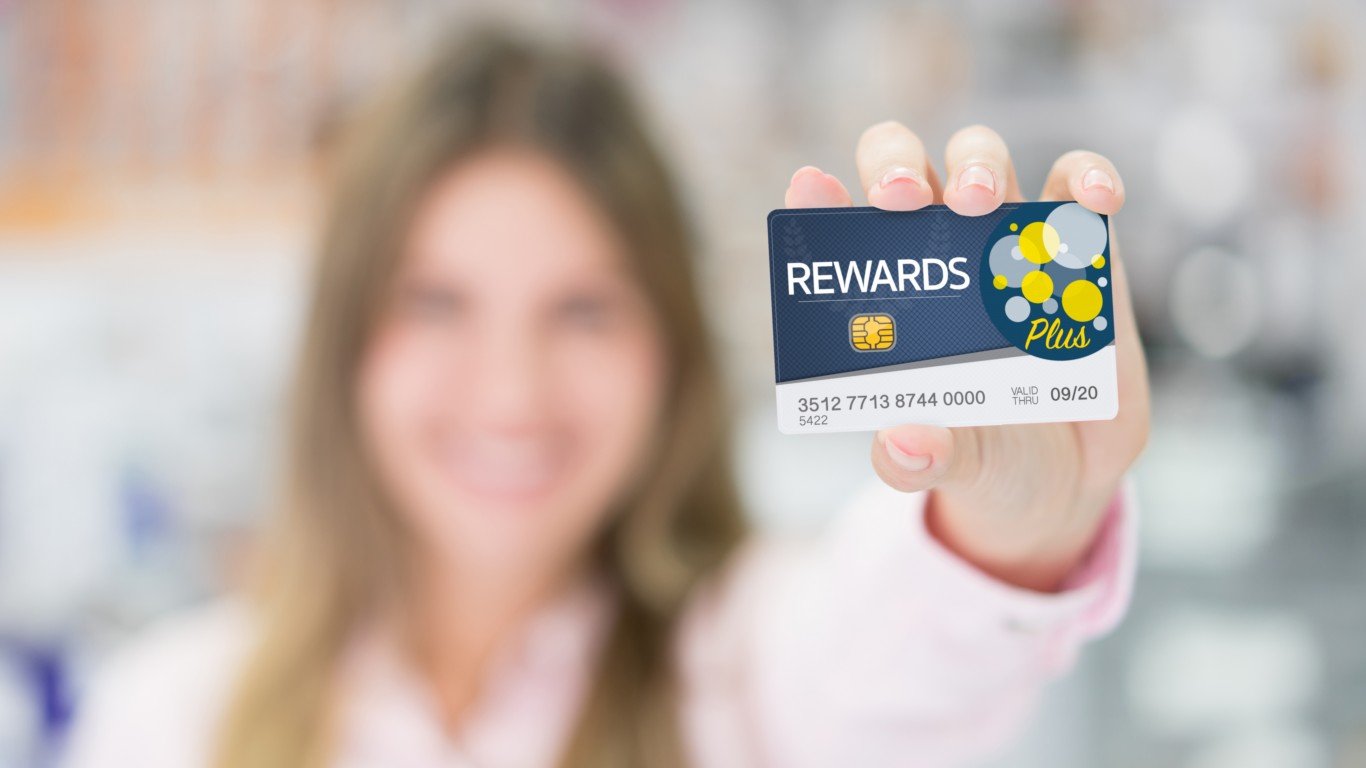
14. You don’t belong to supermarket loyalty programs
These programs are good and bad. The bad part, of course, is that using a market membership card means information about you is being tracked — what you buy, how much money you spend, what products you prefer, etc. But then Google and Facebook, and all those other things you can’t do without, compile data on you, too. And the good thing about loyalty programs is that, unlike Google and Facebook, they save you money, with pricing on individual items and sometimes overall discounts.
[in-text-ad-2]
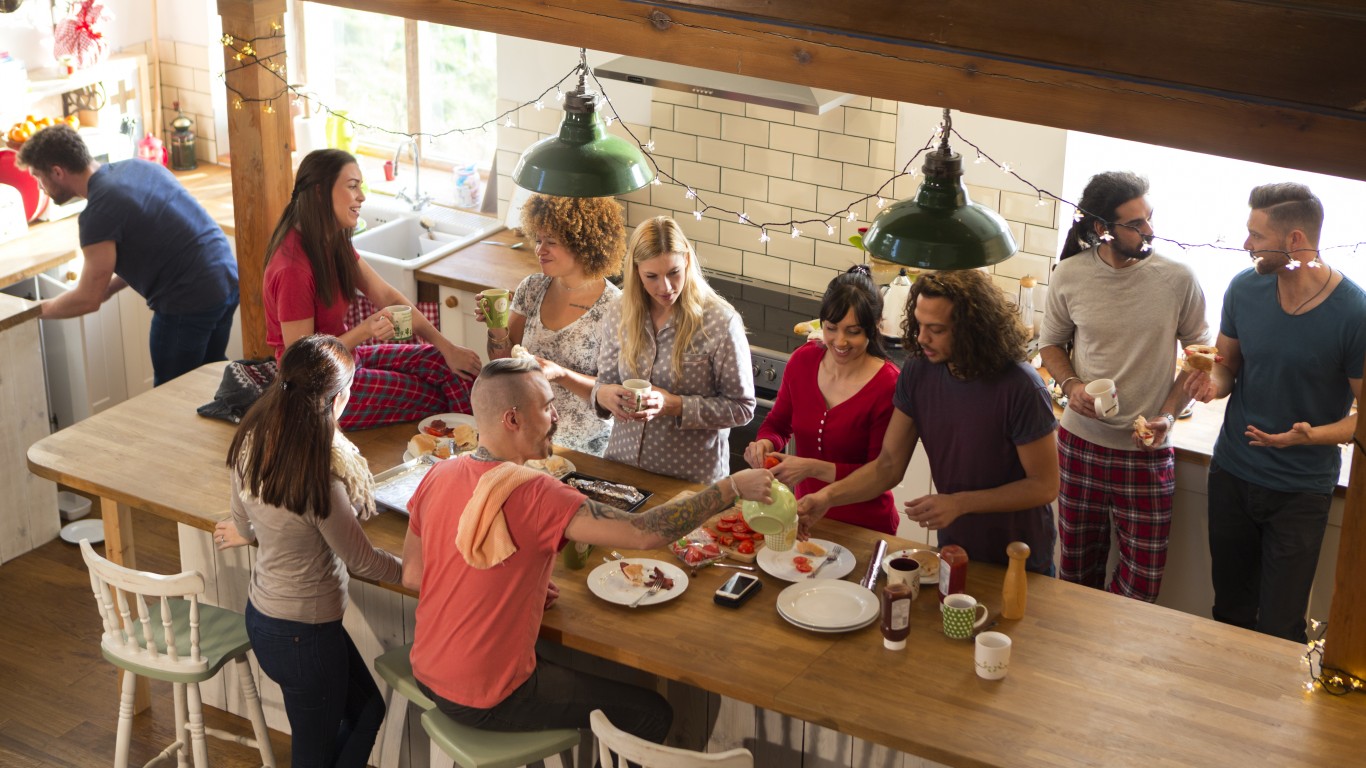
15. You don’t coordinate food shopping with your housemate(s)
If you share your living quarters with somebody else, whether a roommate (or several) or a spouse or other family member, it’s a good idea to compare grocery lists so that two — or more — people don’t come home from the market with exactly the same things. (Check the refrigerator and the cupboards before you shop, too, to make sure somebody else hasn’t already bought what you were going out for.)
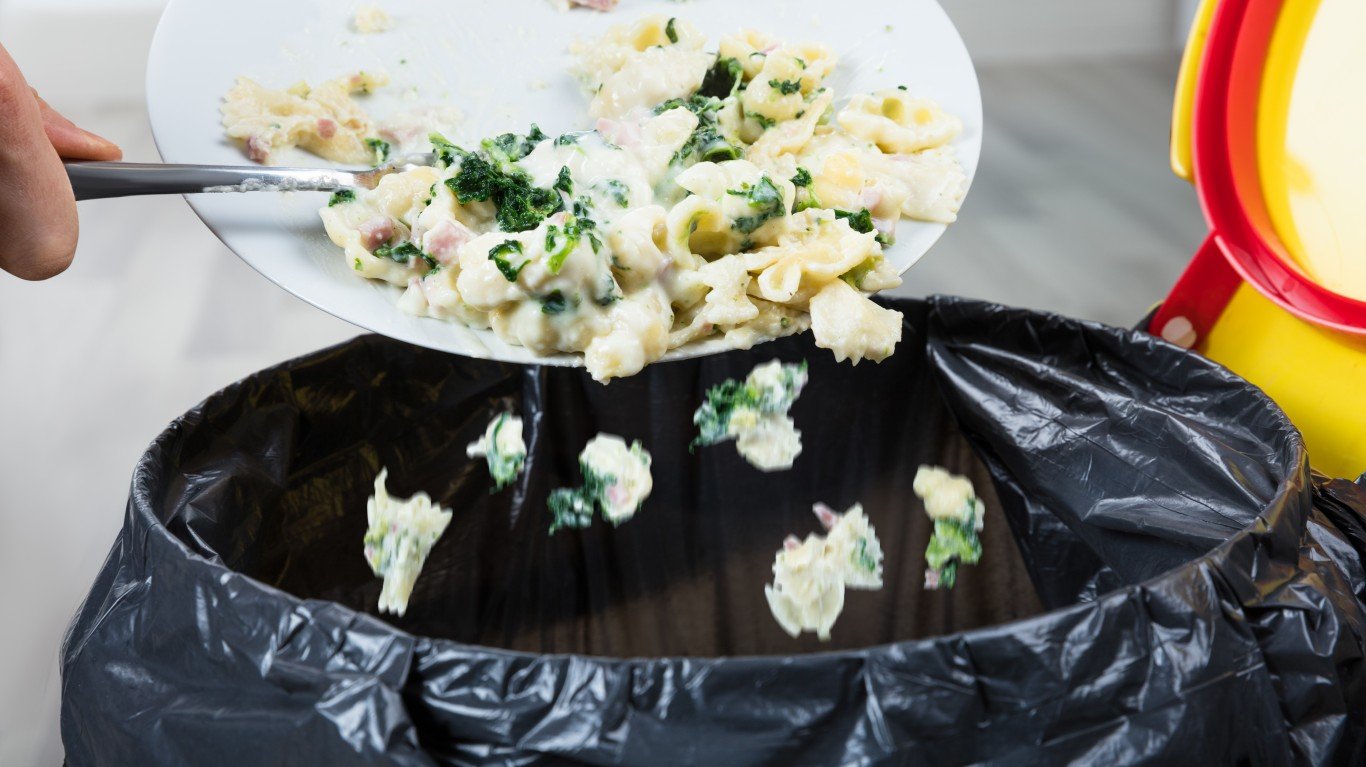
16. You let food spoil and have to throw it out
Remember No. 2, about not planning your meals? This is what can happen. Those avocados you bought on sale now squish when you pick them up; those limes have hardened into juiceless little spheres; that ground beef smells kind of funny…. It’s all too easy to forget about the food you’ve spent good money on until it’s useless. It has been estimated that Americans toss about 23 pounds of food per person every month. For a family of four, that could add up to almost $200 a month.
[in-text-ad]
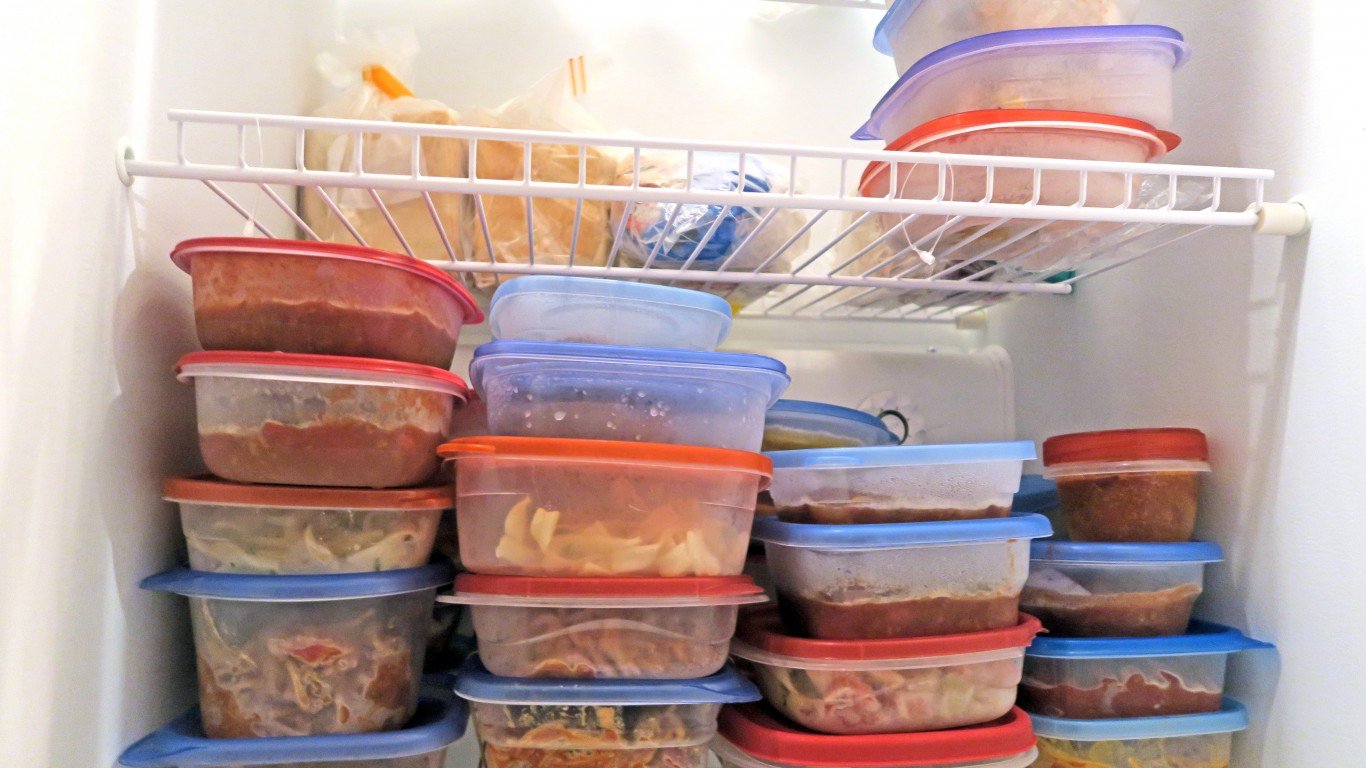
17. You never get around to eating those leftovers
Making too much food can be a good thing, because leftovers, properly packaged and stored in the refrigerator or freezer, can be reheated for a no-fuss meal at a later date, or recycled into another dish altogether (that surplus beef stew, for instance, can be turned into a pasta sauce). But too many of us save leftovers and then let them grow moldy at the back of the fridge or age out in the freezer. A good tactic is to label them with the date when you stow them and put the newest foods behind the older ones. First in, first out.
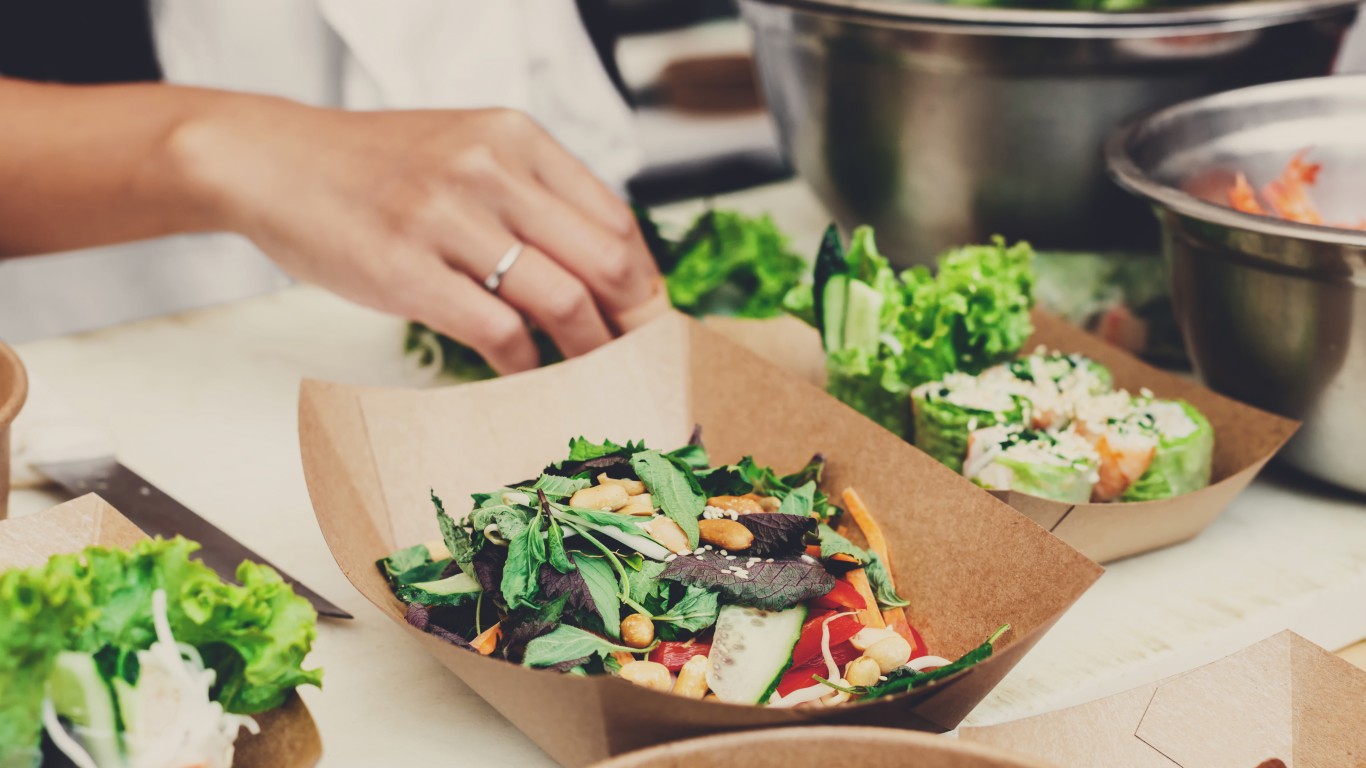
18. You use meal delivery services often
DoorDash, UberEats, GrubHub…. Where would we be without these ever-more-popular meal delivery services, bringing us almost any kind of food we can imagine, from a Big Mac to a yellowtail scallion roll to chicken and waffles? Ordering in from your favorite restaurant is undeniably convenient — but it also runs up the bill. Prices vary according to where you live, but, as one example, a foot-long, oven-roasted chicken sub, a bag of potato chips, and a Coke would cost $12.47 (not counting tax or tip) at a nearby Subway in suburban Connecticut. If you got the same meal through UberEats, they’ll tack on a $1.87 service charge and a $2.49 delivery fee, so the total is now $16.83. If you ordered a similar meal once a week for a year, you’d be out $226.72.
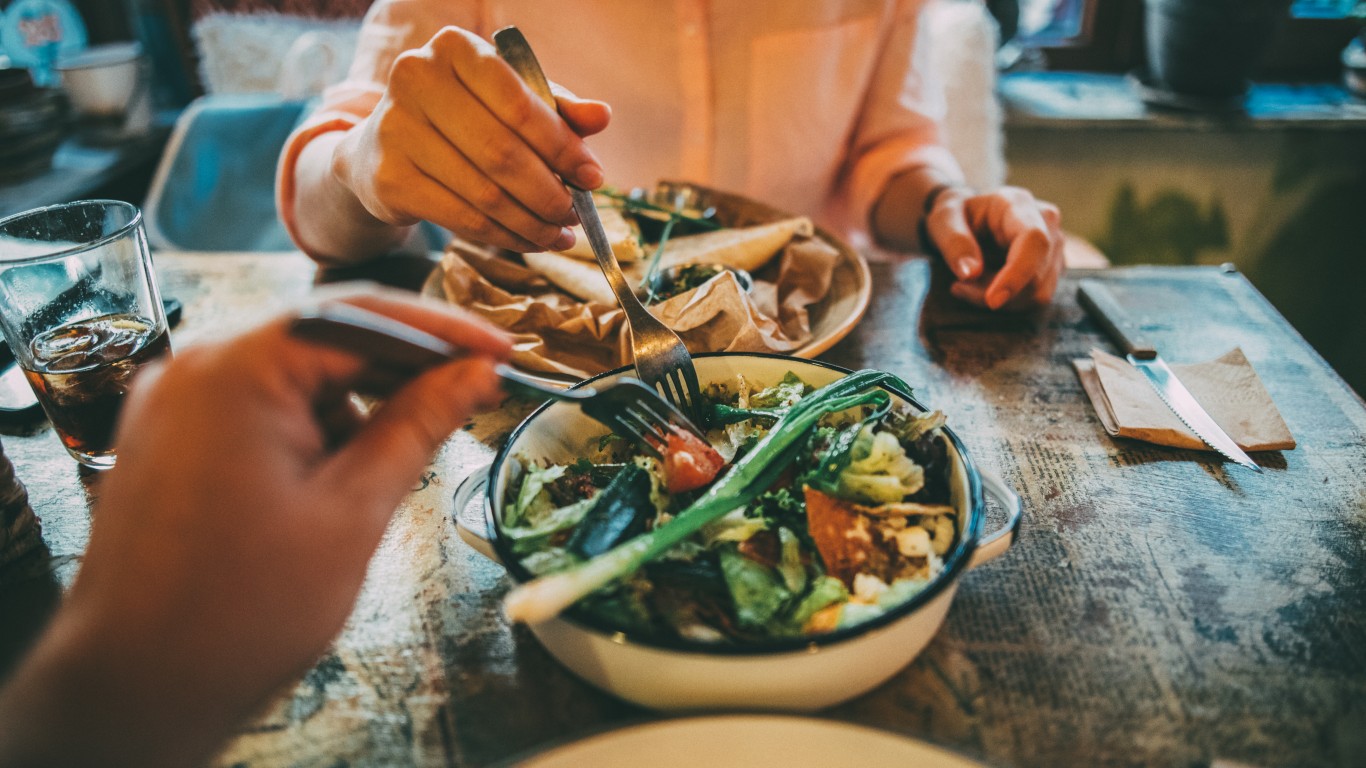
19. You never take food home from restaurants
It’s easy to over-order when you go out to eat, especially at establishments like Chinese restaurants, pizzerias, and family-style Italian places where people are sharing and so tend to fill the table with too much food. But you can find yourself with food on your plate but no room in your belly at any kind of eatery. (Maybe that Cobb salad was much bigger than you’d expected, or you just couldn’t finish that four-piece serving of fried chicken.) Almost any restaurant will happily pack up whatever you can’t eat. Doggy bags are an accepted fact of life in restaurants in America; people don’t even joke about them anymore. You paid for the food, so you own it — and the remains of tonight’s dinner might well make a perfect lunch tomorrow.
[in-text-ad-2]

20. You exceed national average food expenditures
There’s ultimately one irrefutable way to tell if you’re spending too much money on food: Track your home food expenditures for a month and then compare them with the USDA’s monthly computation of average food costs for U.S. individuals and families. The figures are broken down according to age, sex, and family composition, and cover four levels of expenditure — thrifty, low-cost, moderate-cost, and liberal. In December 2019, for instance, a single male aged 19 to 50 would have spent $185.90, $240.60, $301.50, and $369.10, respectively. A liberally spending male and female couple aged 19 to 50 with two children, one aged 6 to 8, the other 9 to 11, would have rung up $1,287.50 in food costs for the month.
Essential Tips for Investing: Sponsored
A financial advisor can help you understand the advantages and disadvantages of investment properties. Finding a qualified financial advisor doesn’t have to be hard. SmartAsset’s free tool matches you with up to three financial advisors who serve your area, and you can interview your advisor matches at no cost to decide which one is right for you. If you’re ready to find an advisor who can help you achieve your financial goals, get started now.
Investing in real estate can diversify your portfolio. But expanding your horizons may add additional costs. If you’re an investor looking to minimize expenses, consider checking out online brokerages. They often offer low investment fees, helping you maximize your profit.
Thank you for reading! Have some feedback for us?
Contact the 24/7 Wall St. editorial team.
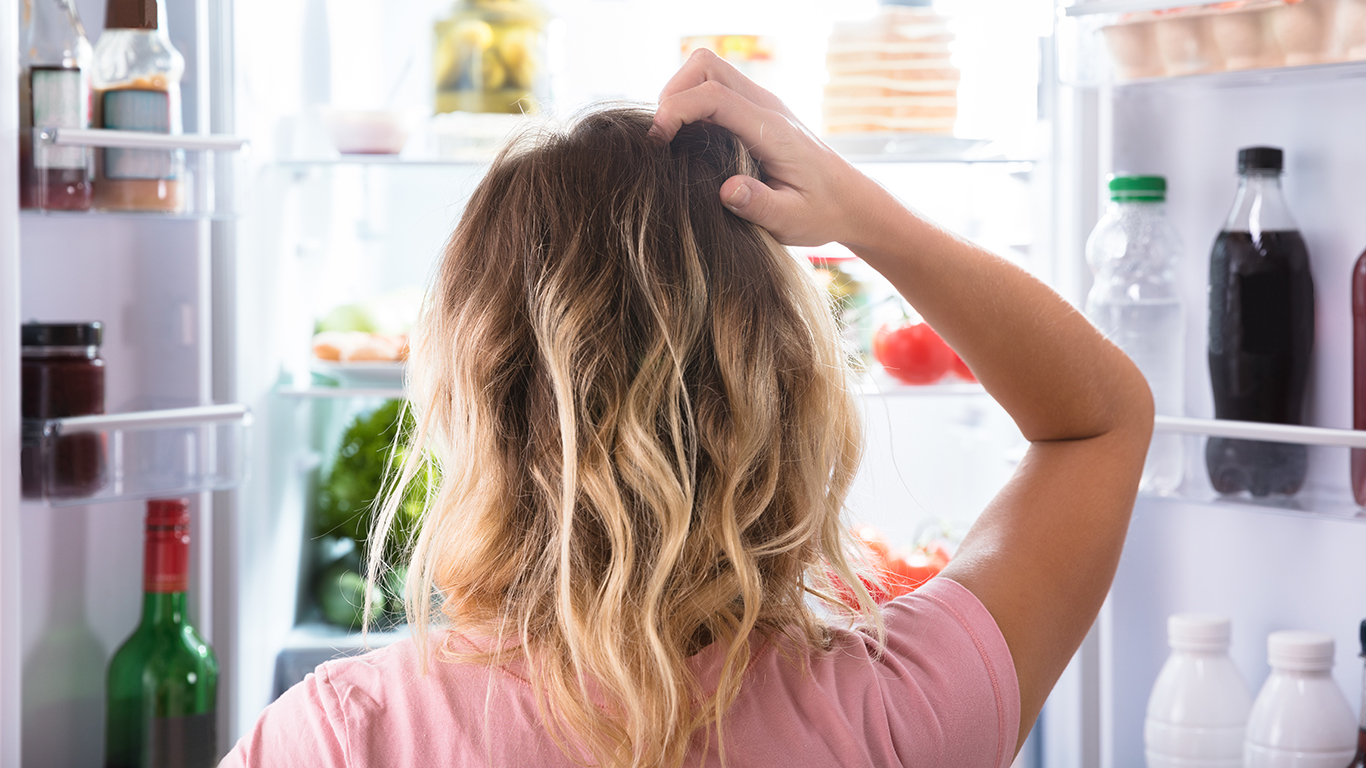 24/7 Wall St.
24/7 Wall St.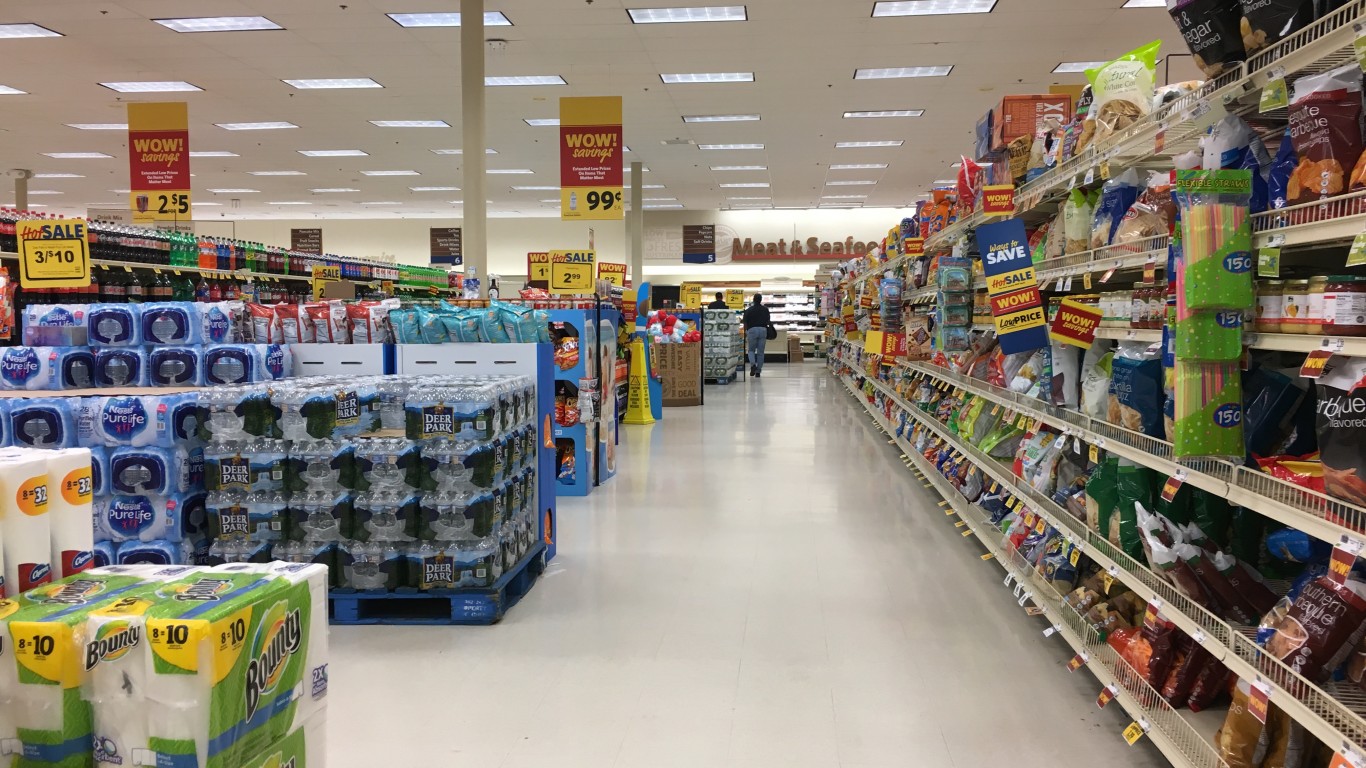
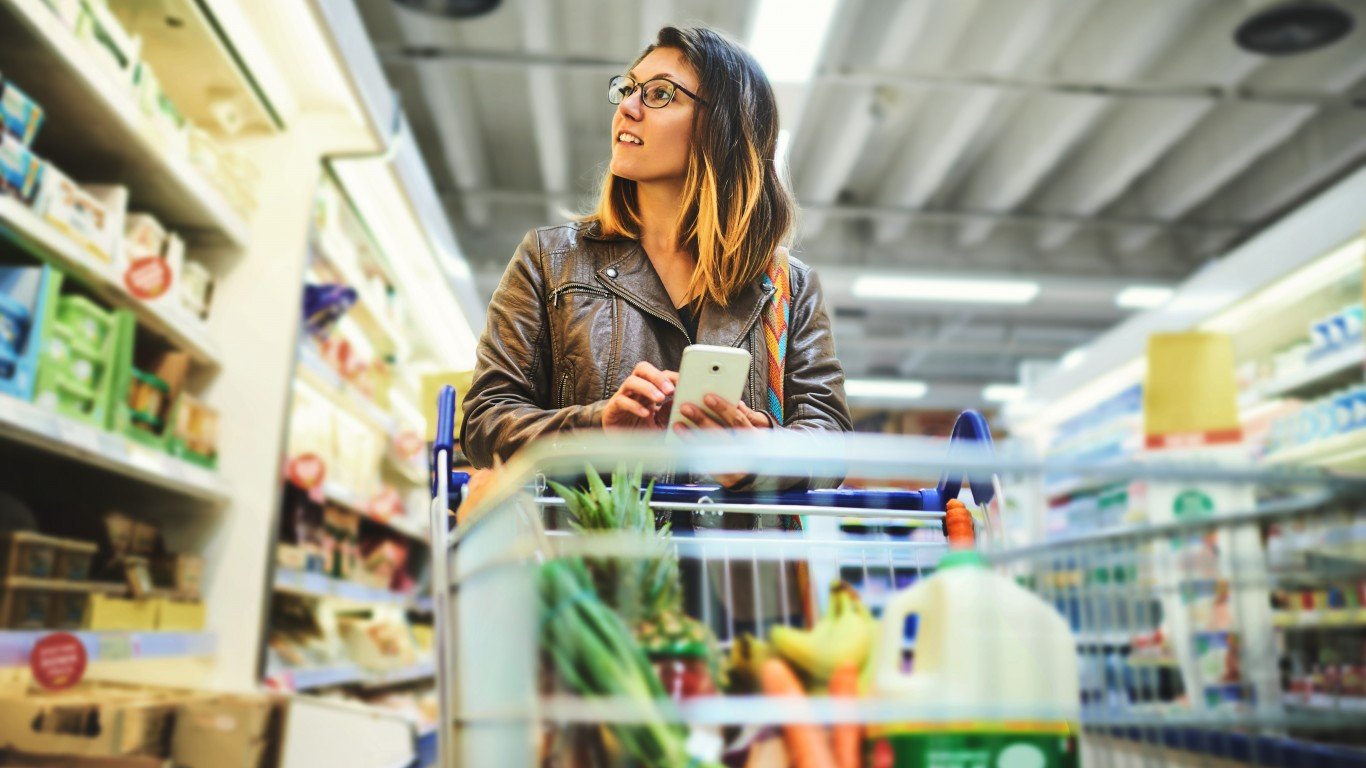 24/7 Wall St.
24/7 Wall St.